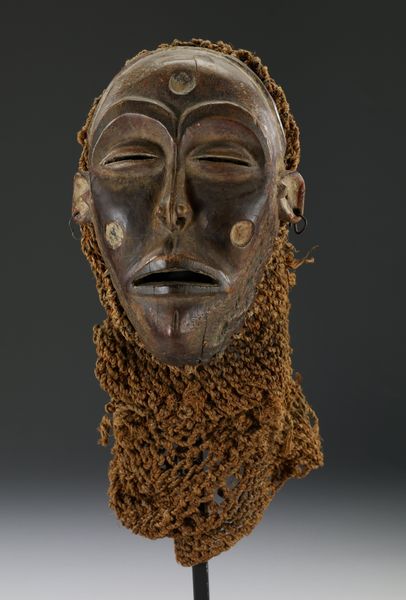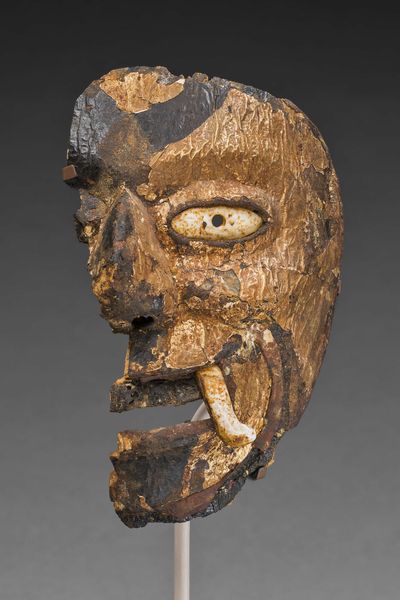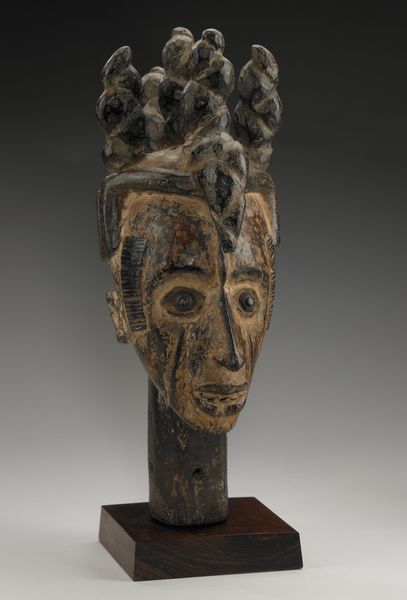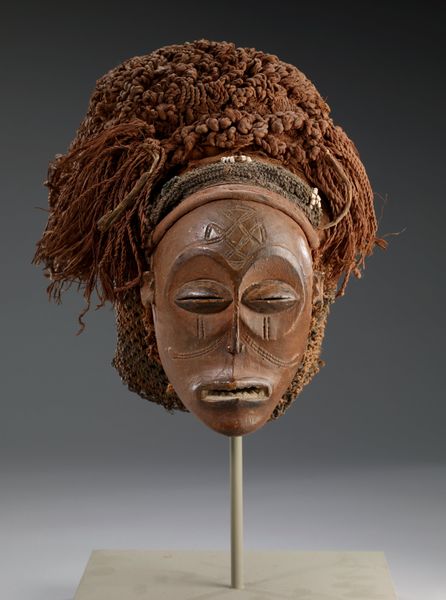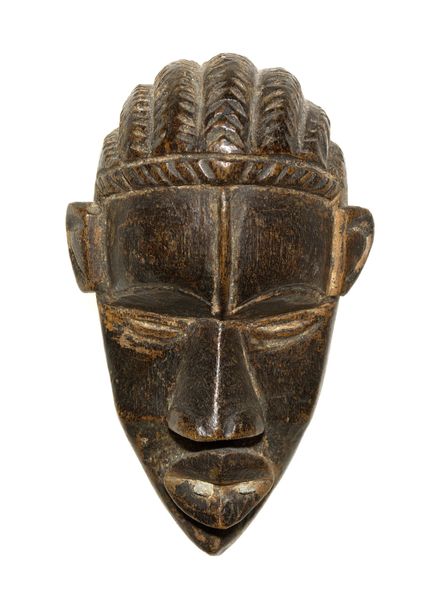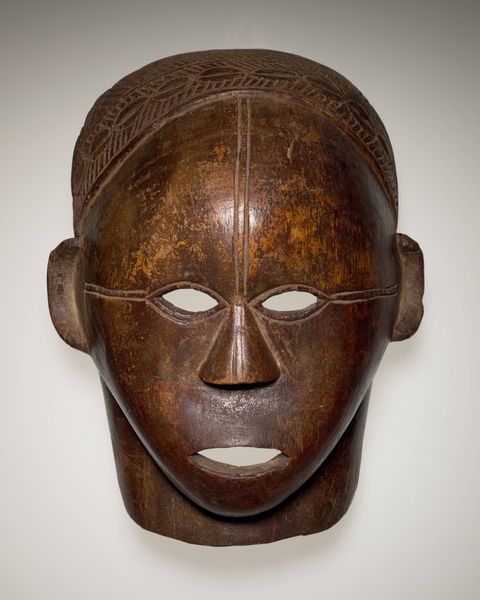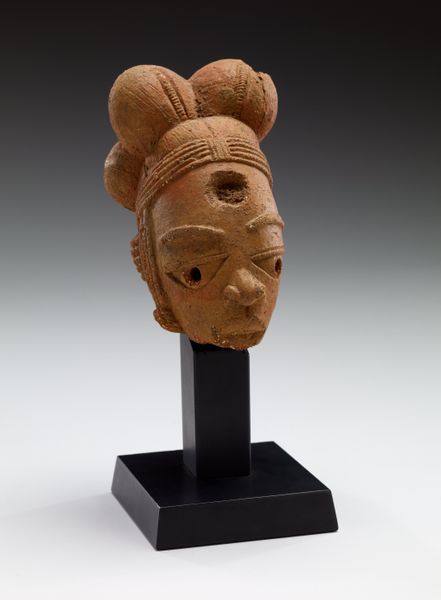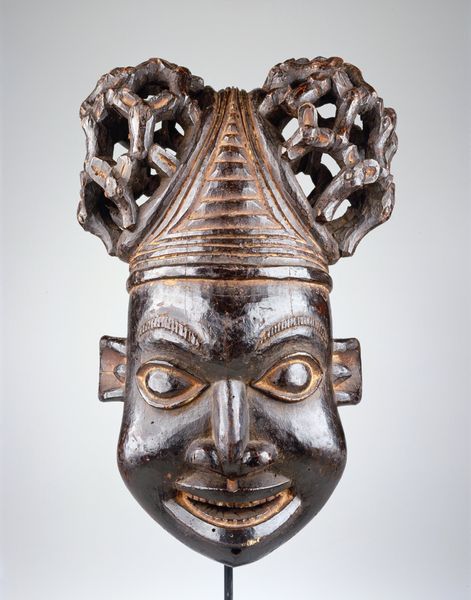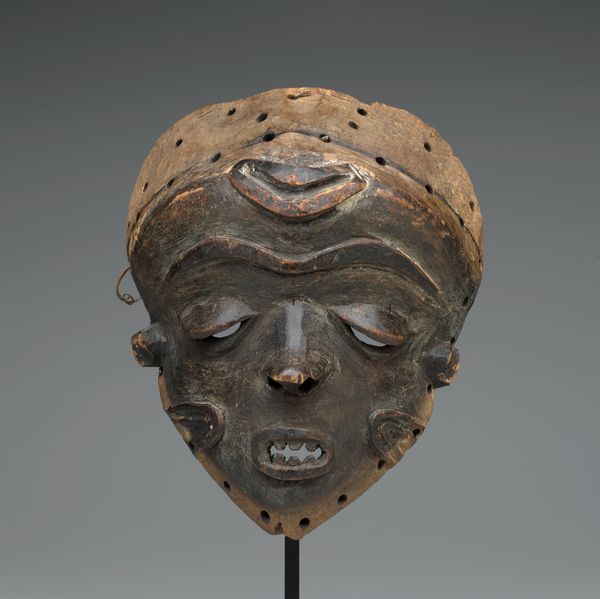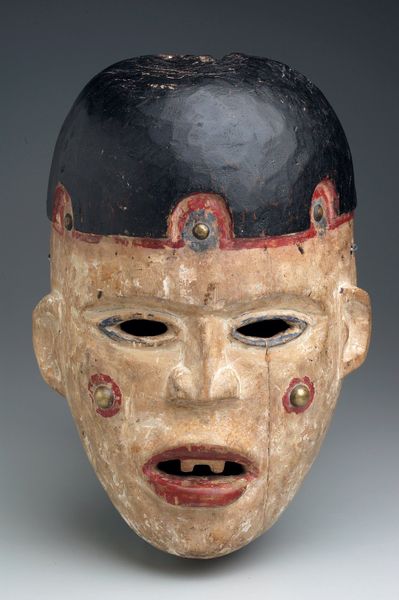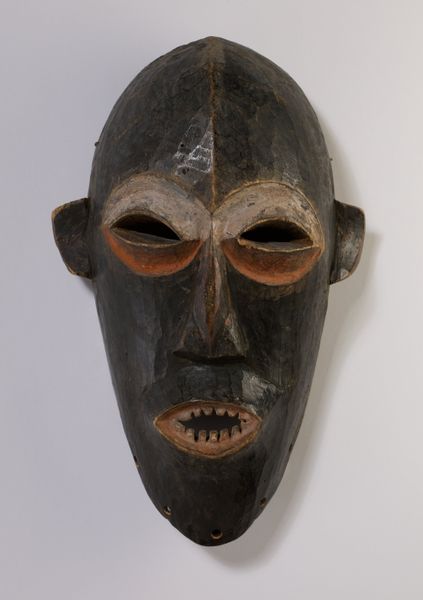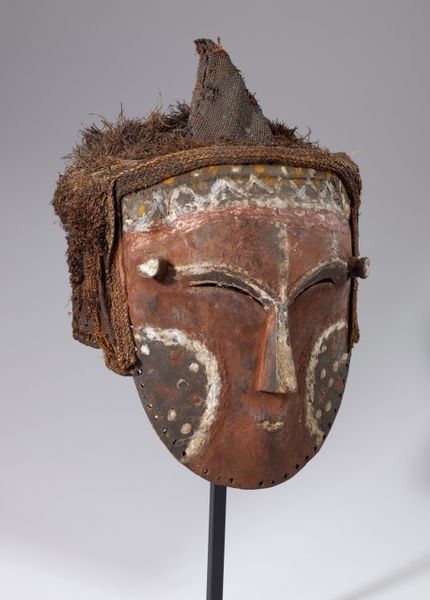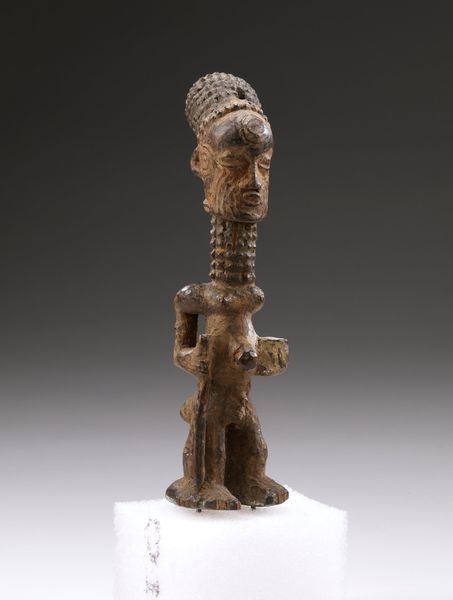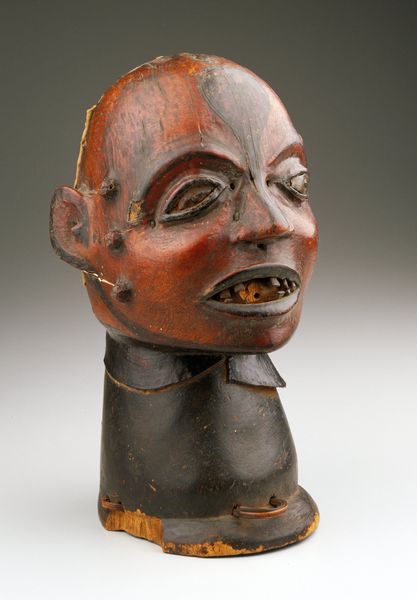
carving, sculpture, ivory
#
portrait
#
african-art
#
carving
#
sculpture
#
ivory
Dimensions: H. 9 3/8 x W. 5 x D. 2 1/2 in. (23.8 x 12.7 x 6.4 cm)
Copyright: Public Domain
Curator: This exquisite pendant mask, carved from ivory, depicts Idia, the Queen Mother of the Benin Kingdom. It dates from the 16th century. Editor: Striking. The coolness of the ivory, coupled with the symmetry, creates a sense of serene power. Yet, the inlaid metal pupils impart a certain gravity. Curator: Indeed. The material itself, ivory, holds significant symbolic weight, reflecting purity and wealth and royal authority. Considering it was painstakingly carved and the patina from its use over centuries. Do you think the sculptor faced unique challenges working with this medium? Editor: Undoubtably, ivory presented its constraints but allowed for unparalleled detail. Carving the intricate coiffure of mudfish and Portuguese heads implies specialized knowledge passed through generations. It speaks volumes about access to the ivory itself; an assertion of power through resource control. Curator: The Portuguese heads are key—they represent Benin's trade and diplomatic relationships. Note how each element contributes to a cohesive visual language and serves as a form of recorded communication between cultures and generations, imbedded in layers of iconographic interpretation. Editor: This isn't merely decoration but an embodiment of cultural memory and social status made materially manifest. By looking closer we witness the transcultural exchange and embedded social hierarchy that underpin even what some might dismiss as craft rather than high art. It recontextualizes assumptions and prompts critical examination of art production through political and socioeconomic lenses. Curator: An astute observation, and one that adds another layer to how we interpret not only the artistry but its lasting effect as a poignant demonstration of symbolic power within this sculpted object. It asks the viewer to reconsider the power and language innate within this queen's regal form. Editor: Absolutely, viewing art as intrinsically bound to material history enhances, in the end, both its aesthetic and historical value to critical scholarship. This examination of embedded production transforms appreciation towards decolonized perspectives, allowing for recognition and comprehension.
Comments
No comments
Be the first to comment and join the conversation on the ultimate creative platform.
